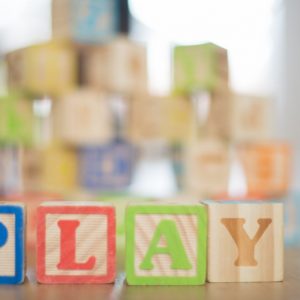A Guide to Children’s Wooden Toys

Unfortunately, not all children’s wooden toys are created equal. Some wooden toys that you can buy in Australia may not be considered safe and may also contain pollutants considered harmful for your children.
Good quality and well-made children’s wooden toys will be stable and durable that they last a life time and can be passed on from your own children to their children - generation to generation.
Wooden toys should provide children the space and opportunity to explore, keeping them entertained far longer than those other types of toys that turn children into passive disengaged spectators.
Don’t forget to also consider acquiring second-hand toys. Second-hand toys are beneficial for both your wallet and the environment through recycling. But again, be sure to pay attention to the construction of these wooden toys to ensure the use of good quality wooden materials, workmanship and stability. We do not recommend acquiring second-hand ‘plastic toys’, as they might contain phthalate softeners (Phthalates or phthalate esters, are esters of phthalic acid).
Be cautious of selecting cheap wooden toys, as these should be looked at very carefully to ensure you don’t pick those where the manufacturer has not utilised good materials so that the toy might contain harmful substances.
When picking suitable wooden toys always survey them using all your senses. When testing toys, you should not find the following:
- In toys for babies and toddlers: small parts that can be detached. No sharp seams or edges.
- A noticeable smell.
- An error in processing, for example in the paint of the wooden toy.
- Material that rubs off when rubbing.
- Any material that can be pulled off, or out.
It is essential to look at suitable toy age restrictions. Many toys are not suitable for children under the age of three years of age. The wooden toys might contain small parts that a small child could swallow. For example, as a general guide for children under three:
- No small parts up to the size of a tennis ball should be detachable.
- Batteries or button cells need to be positioned and secured in a way that the children cannot manage to get hold of them.
- If a wooden toy makes noises check it by holding it to your ear. If it is too loud for you, it is too loud for your little one.
- If a wooden toy smells toxic it has the potential to be a health risk, i.e. can trigger an allergy.
- All wooden toys should clearly state the Manufacturer or Importer. It these legal requirements are not met maybe consider not buying the toy.
A summary of what to expect from wooden toys:
- Wooden toys should make children happy and not endanger or poison them.
- Wooden toys should be checked using all your senses.
- Some wooden toys might have some damage, but not every type of damage necessarily poses a risk to the child. However, it does give you an idea about the manufacturer and their care to pick up errors in their toys.
Besides the great advantages of toys and specifically wooden toys, children should obviously also have experiences outside the indoor play environment. Consider taking them to a children’s theatre play or for a bike ride, a trip to the wildlife park or a football game. No collection of toys can replace the valuable time parents and their children spend together and that forms the strong bond we all love to create.
Don’t forget to share your own experiences in the comments to this post or on our AMouseWithAHouse Facebook page and tag us in using the hashtag #amousewithahouse
We have a large range of affordable, quality made, safe wooden toys available in our AMouseWithAHouse children’s wooden toys for you to choose from to add to the toy repertoire for your own child.




